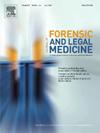从验尸实践到法医洞察力。开颅术研究综述
IF 1.2
4区 医学
Q3 MEDICINE, LEGAL
引用次数: 0
摘要
开颅术在历史和当代的尸检实践中都发挥了重要作用,包括尸检、解剖、防腐和手术培训。由于技术的重叠和骨骼遗骸的不同条件,骨考古学背景下这些程序的区分仍然是一个复杂的挑战。本文综述了对颅骨开颅术中骨材料的分析研究,重点是切口痕迹形态、工具痕迹特征和背景证据,以区分死后干预。这些发现突出了应用于考古遗骸的法医方法的进步,强调了历史记录和现代分析技术的结合。未来的研究应旨在结合实验考古学和跨学科的方法,以加强对过去医疗程序的解释。本文章由计算机程序翻译,如有差异,请以英文原文为准。
From post-mortem practice to forensic insight. A review of craniotomy studies
Craniotomies have played a significant role in both historical and contemporary post-mortem practices, including autopsy, anatomical dissection, embalming and surgical training. The differentiation of these procedures in osteoarchaeological contexts remains a complex challenge due to the overlap in techniques and the varying conditions of skeletal remains.
This review presents studies analyzing craniotomies on osteological material, focusing on cut mark morphology, tool mark characteristics and contextual evidence to distinguish post-mortem interventions.
The findings highlight the advancements in forensic methodologies applied to archaeological remains, emphasizing the integration of historical records and modern analytical techniques.
Future research should aim to incorporate experimental archaeology and interdisciplinary approaches to enhance interpretations of past medical procedures.
求助全文
通过发布文献求助,成功后即可免费获取论文全文。
去求助
来源期刊

Journal of forensic and legal medicine
MEDICINE, LEGAL-
CiteScore
2.70
自引率
6.70%
发文量
106
审稿时长
57 days
期刊介绍:
The Journal of Forensic and Legal Medicine publishes topical articles on aspects of forensic and legal medicine. Specifically the Journal supports research that explores the medical principles of care and forensic assessment of individuals, whether adult or child, in contact with the judicial system. It is a fully peer-review hybrid journal with a broad international perspective.
The Journal accepts submissions of original research, review articles, and pertinent case studies, editorials, and commentaries in relevant areas of Forensic and Legal Medicine, Context of Practice, and Education and Training.
The Journal adheres to strict publication ethical guidelines, and actively supports a culture of inclusive and representative publication.
 求助内容:
求助内容: 应助结果提醒方式:
应助结果提醒方式:


